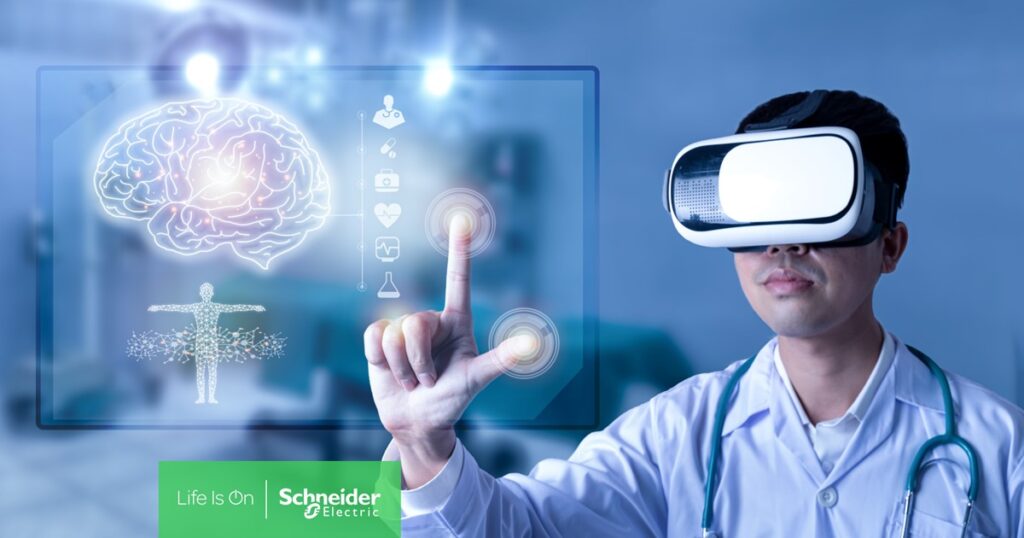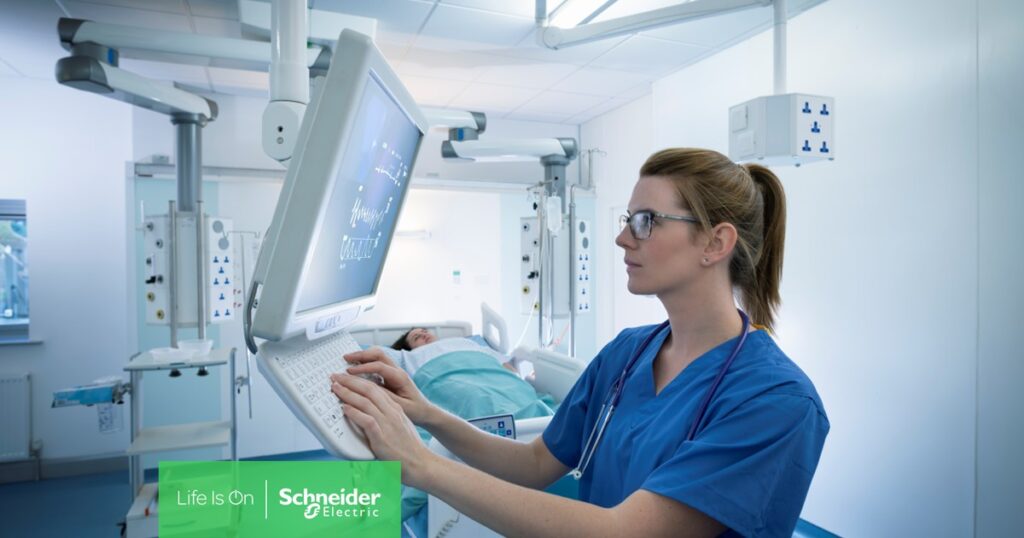In the dynamic healthcare landscape, hyper-efficiency within smart hospitals takes on a new level of importance. When we say “hyper-efficiency,” we refer to the optimal performance of hospital operations, where smart capital expenditure aligns seamlessly with intelligent operational procedures and technology deployment. This is where edge computing comes into play.
The transformation from traditional to smart hospital hinges on the strength of IT infrastructure, the bedrock supporting various functions ranging from electronic patient records to pharmaceutical distribution. With the addition of edge computing in healthcare, there is an unprecedented opportunity to enable smart hospital hyper-efficiency.
Hospital digital transformations aided by edge computing in healthcare
The healthcare sector has witnessed a remarkable digital evolution over the past decade. Once armed with clipboards and pens, the nurse’s station has transformed into a digital nexus, bustling with advanced systems aimed at enhancing the accuracy and efficiency of healthcare delivery. This hub is now the epicenter for various digital health technologies, including electronic health records (EHR), digital patient monitoring devices, automated medication dispensing systems, and telemedicine platforms.
This shift from analog to digital has streamlined processes and underscored the importance of power resilience and network stability in healthcare settings. With increased reliance on electronic devices and systems, power resilience is paramount. Any power disruption can result in system downtime, potentially affecting patient care and safety. For example, life-supporting devices may malfunction during power outages, EHR systems could become inaccessible, and essential data might be at risk.
Network stability and speed are equally vital in this digital era, with most healthcare technologies interconnected and dependent on networks for communication and data exchange. A stable, secure, and fast network infrastructure is imperative, as instability can result in data transmission delays, a loss of connectivity between devices, and an inability to access essential applications and services, with serious implications for patient outcomes in emergency situations.

Edge computing in healthcare: A catalyst for hyper-efficiency
Edge computing is pivotal in guiding hospitals towards hyper-efficiency. By processing data closer to its origin—whether in admissions, pharmacies, or emergency rooms—edge computing enhances operational efficiency. This proximity ensures immediate data processing, crucial for patient safety in certain scenarios.
Hyper-efficiency in practice: smart hospital scenarios
Admissions: Digital admissions processes ensure swift and accurate patient intake. A system glitch would mean reverting to manual methods and result in a slower information exchange, compromising efficiency and accuracy.
Pharmaceuticals: Digital systems control access to medications through secure logins, with system failures posing serious risks to patient safety.
Emergency room: Efficient scanning of items used in patient care for accurate billing is crucial. Inefficiencies could lead to billing errors, affecting both the hospital and the patient.
Beyond equipment: The ecosystem of efficiency
Achieving hyper-efficiency in healthcare goes beyond investing in state-of-the-art equipment and technologies. The essence of hyper-efficiency lies in the strategic integration of these technologies within the unique operational framework of each healthcare facility. This integration ensures an efficient working environment and a resilient healthcare ecosystem that can adapt to changing needs.
A best approach for decision makers at smart hospitals is to look for providers and solutions that meet the immediate needs of the healthcare facility and align closely with its long-term operational goals. Be on the lookout for flexible and customizable edge computing solutions that can be tailored to a hospital’s specific challenges and requirements.
For example, certain medical procedures and functions, like robotic surgery, demand low latency computing connections due to their need for real-time precision and responsiveness. Other activities, like analyzing a patient’s medical history, can tolerate lower computing latency without compromising the quality of care provided. Recognizing and understanding these differences is crucial for smart hospitals as it allows them to:
- Choose technology solutions that meet their department or functions’ specific needs
- Focus their investments where they are needed most.
Given the diverse and dynamic nature of healthcare operations, implementing uniform technology solutions without considering the unique needs of different functions and departments can lead to inefficiencies and operational bottlenecks.

The edge computing advantage in healthcare
By prioritizing hyper-efficiency, smart hospitals stand to not only slash operational costs, but also enhance the patient experience and safety. In an era when many healthcare facilities grapple with staffing shortages, the drive towards hyper-efficiency, facilitated by edge computing, is a game-changer. It is a strategic approach that ensures hospitals can deliver exemplary services consistently, even amidst constraints. Edge computing in healthcare is indeed a transformative force, steering the sector towards unparalleled efficiency and excellence in patient care.
Check out the new eBook, IT Guide to Reducing Smart Hospital Costs & Boosting Patient Satisfaction, to learn more about how your healthcare IT department can help drive hyper-efficiency to improve its bottom line and patient experience. If you require assistance to create or strengthen your smart hospital ecosystem, we offer data center solutions, battery backups, server rooms, and uninterruptible power supplies. You can also contact Schneider Electric here or at 1 (877) 800-4272 to arrange a personalized consultation.


